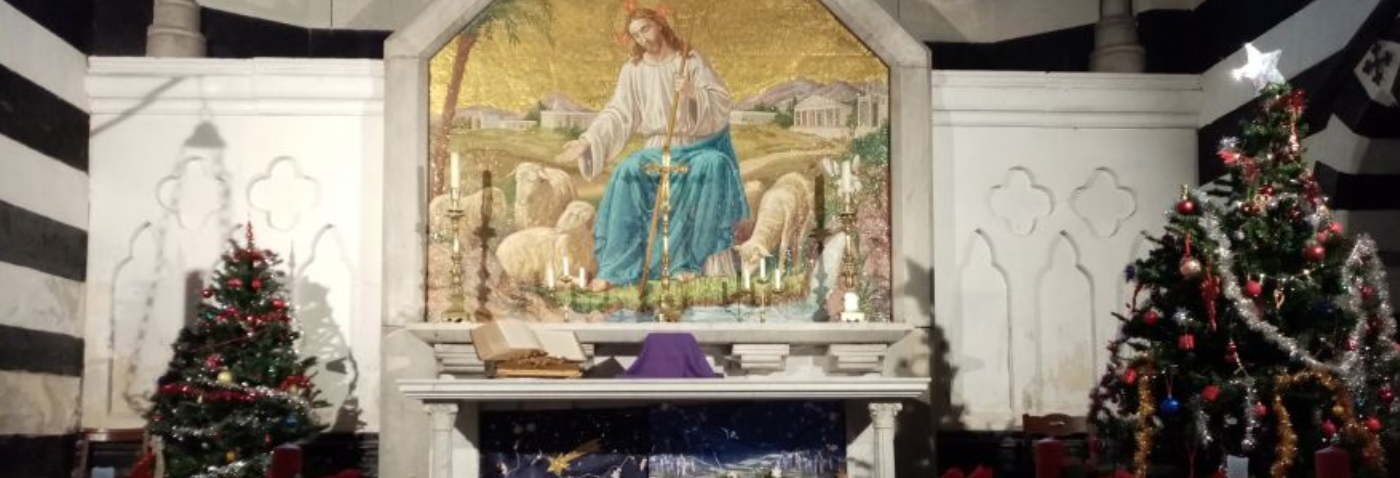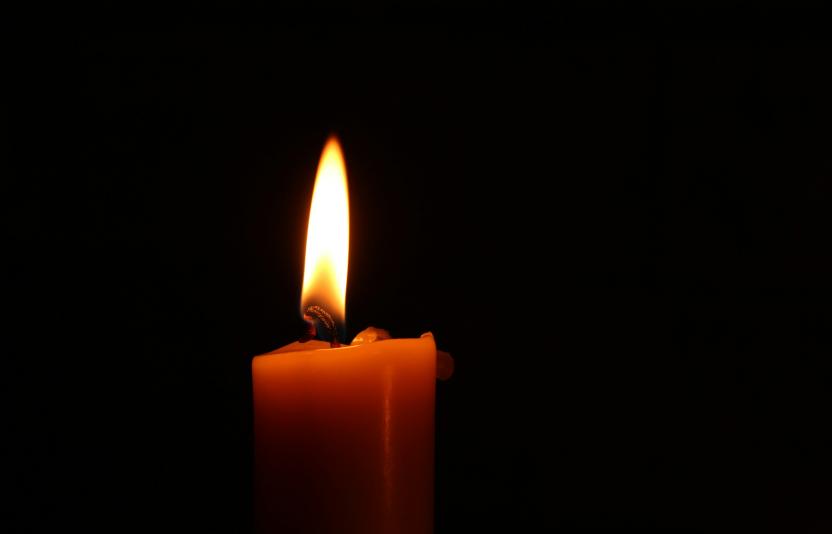Holy Ghost, Genoa: Mission to Migrants in a Time of Pandemic

The Revd Canon Tony Dickinson, Chaplain at Holy Ghost, Genoa shares this article with us. He reflects on life in the chaplaincy in the six months of the pandemic, and since his church was one of the first in the diocese to experiment with online worship:
The Church of the Holy Ghost, Genoa, was among the first churches in the diocese to be affected by the Covid-19 pandemic. Liguria went into the spring lock-down two weeks before most of the rest of Italy. Holy Ghost Genoa was also one of the first churches to experiment with ways of ministering on-line to its very mixed congregation, recording the Sunday Eucharist and posting it on Facebook each week from the beginning of Lent until Ascensiontide, and producing a range of on-line materials for reflection and prayer. The Diocese and The Church Times published our story in early March.
Churches in Italy reopened for public worship on 18 May and six months on it is, perhaps, time to take stock of how the life of the church has been impacted by the pandemic. Worship looks fairly normal, apart from the obligatory hand-sanitising in the entrance porch, the social distancing and the masks. Our team of welcomers politely refuse entry to those not wearing one. Numbers, though, are down, with people attending every two or three weeks, rather than weekly as they did before, and we rarely see those who live at a distance, especially since new restrictions were imposed in early November. Until the first lock-down at the end of February, our normal Sunday congregation was in the region of 30-40 (including children). Since we reopened for worship congregations on a “normal” Sunday have comprised 15-25 adults and 0-10 children, in other words roughly half to two-thirds of what they were. The average of our Sunday attendances during the past six months works out at 24 adults and 4 children: but this figure takes into account the larger attendance at special services such as baptisms and the church’s Patronal and Dedication Festivals. Because of the pandemic we have lacked the boost to numbers and income that usually comes in the summer from holiday-makers and cruise ship passengers. Nor have we enjoyed this year the presence of Anglophone students following courses at the University or the Conservatoire.
This reduction is reflected in our weekly income. In the period immediately before the initial lock-down it was typically between €100 and €250, with an average of roughly €180 p.w. We also let the church on Sunday evenings to an Evangelical Ecuadorian congregation. The income from that more or less paid the rent on the chaplain’s flat, with the income from a local businesswoman who on week-days pays to park her car in the space in front of the church building. However, from the end of February until the second half of May we received no income at all apart from an emergency grant from the Diocese in Europe to cover expenses. The church building was closed for public worship. There was no rental income from either car parking or the other congregation which uses our premises and the automated payment of a weekly or monthly offering through the bank is neither part of local church culture nor realistic for the many members of the congregation who live from hand to mouth.
Even after the re-opening of the church for worship, the church’s finances have been in an extremely precarious state. The Ecuadorian congregation has not returned and there is doubt whether it will. Fund-raising events, such as our Autumn Bazaar, and other opportunities for engaging with the wider community through concerts and talks have had to be cancelled. Weekly offerings are down by €50-€100, with an average weekly income now in the region of €90. That is supposed to cover the church’s utilities bills, the rent on the chaplain's flat, the chaplain's expenses, the maintenance of our worship, and our contribution to the running costs of the Diocese in Europe. In addition many members of the congregation who are not in regular employment or otherwise members of the “precariat” still require support, whether from the food bank or from the “Neighbours in Need” fund, which provides grants and loans to people in need of immediate cash help. This has been made possible largely through the generosity of the people of St Paul’s Episcopal Church, Rock Creek, Washington DC, as well as through donations from members of the congregation with a secure income.
Paradoxically, the highest level of disbursement from the fund has been since the first lock-down ended, when the city’s generous schemes to support struggling families and individuals came to an end. Cash-strapped landlords, who had been forbidden by law to evict tenants during the lock-down, were quick to start pressing for the payment of rent and utility bills, at a time when many still had no income. This applied even to those with contracts of employment, who found themselves facing demands for rent before they had received their first pay-slips after returning to work. In the two months before lock-down began roughly €700 was paid out to people in need. During the three months of severe restriction that total dropped to just under €500. In the three months after the end of lock-down the fund paid out over €3,000 and the food-bank is still being heavily used by church members and others.

A favourite saying among the congregation is "God sees and provides", and what is being done here by way of pastoral care and nurturing people in Christian faith is little short of miraculous. However, an added complication is that the work done to bring the building back into use after bomb damage in World War II is showing its age, and we are very much aware that another major storm of similar ferocity to the one which hit Liguria in October 2018 could lead to the church being closed as unsafe – and we could not afford the cost of repairs. Necessary work on the roof has been costed at €25,000 and there are growing anxieties about the state of some of the stonework. We have only just paid off the very patient contractor who carried out the replacement of the floor and the church heating system seven years ago, and to do that required us to run our scanty reserves down to a worryingly low level. We are also very much aware that we could do a great deal more if the building were brought up to scratch in terms of its facilities – but that also requires money that we do not have.

Although we are a congregation of the Church of England, the fact that we are in Italy rules us out from applying to high-profile grant-givers such as the Heritage Lottery Fund. And, as may be imagined, an Anglican congregation in a 19th-century building, however renowned its architect may be in the UK, comes a very long way down the queue for funding from Italian sources, which even before the pandemic have not always found it easy to cope with their responsibility for 55 UNESCO World Heritage sites – by far the highest of any European country and equalled globally only by China.
The church has a group of “Friends” who subscribe a yearly sum to support the maintenance of the building and thereby preserving the historic and cultural significance of the Church in Genova. They can be contacted via info@anglicanchurchgenoa.org.
It is also possible to make one-off donations through the Just Giving link on the Diocese in Europe website home page specifying that the gift is for the use of the Church of the Holy Ghost, Genoa.
***
Photos (Tony Dickinson):
Banner: The sanctuary, set up for Christmas. The Italian tradition is to have everything ready by the feast of the Conception of the Blessed Virgin Mary.
Middle: A picture of the food-bank as it was a couple of weeks ago, just after we had received a very generous donation from one of the yachts over-wintering in the Porto Antico (it should have been on its way to the Caribbean, but is stuck because of the pandemic). Normally it contains cans of sardines, tomatoes and vegetables (usually sweetcorn) and packets of pasta. The green bags are food parcels ready to be given out, in accordance with guidance issued by the Trussell Trust.
Bottom: The interior of the church. The cupboards where we store food for the foodbank are at the west end on the north side.


